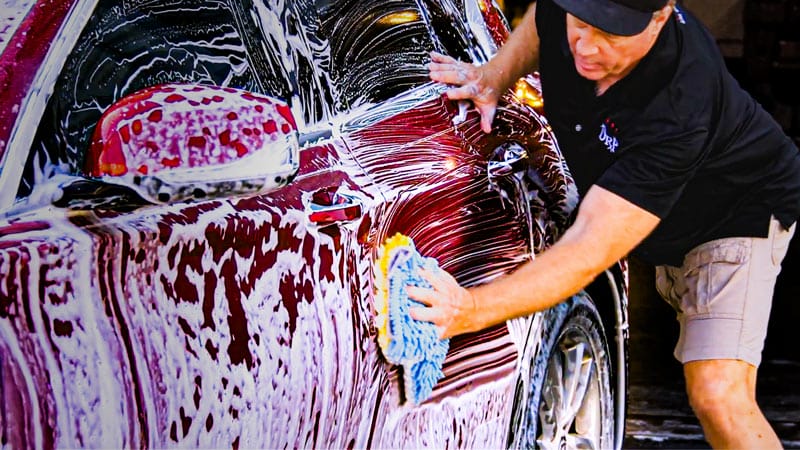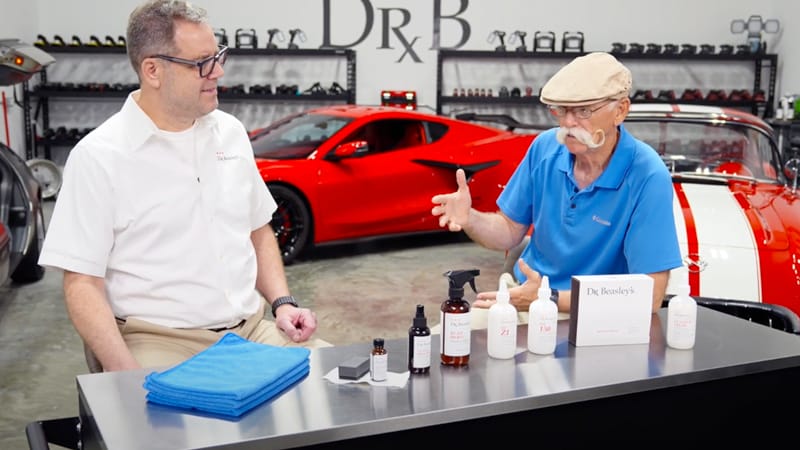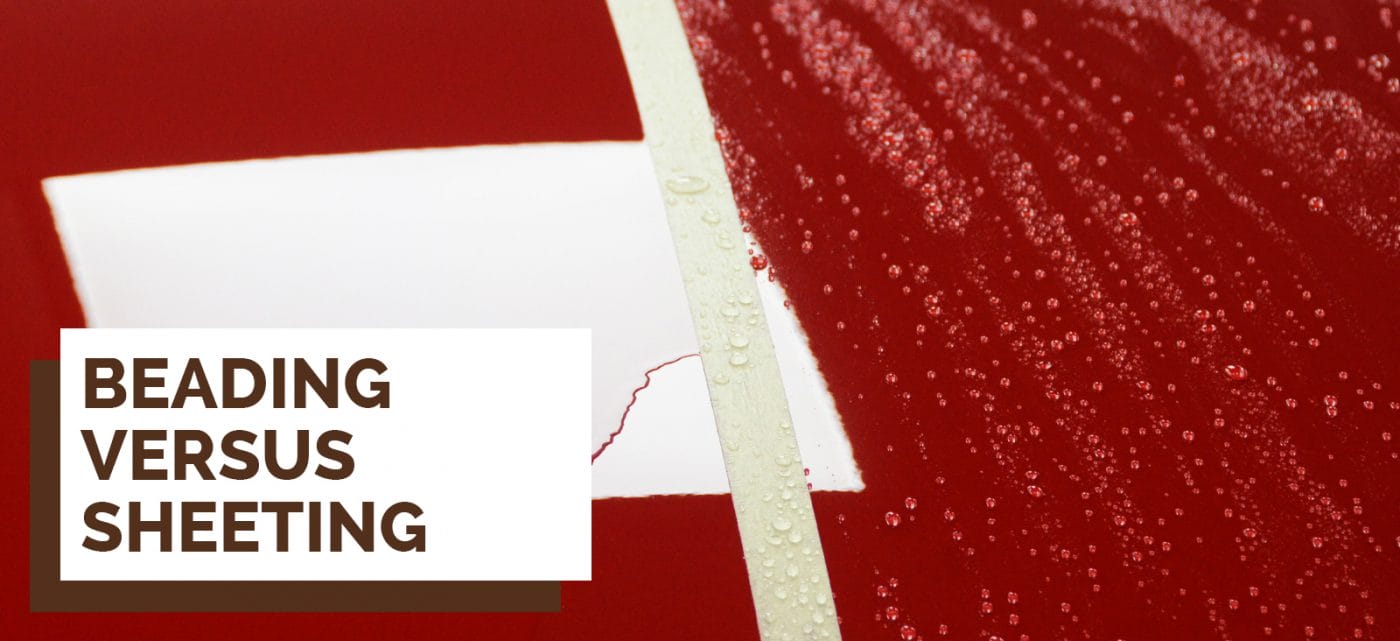Last Updated May 12, 2023
When talking about how water interacts with protected paintwork, most detailers use one of two terms: beading or sheeting. Beading is pretty simple to grasp—orbs of water forming instead of wetting the paint. Sheeting, on the other hand, doesn’t have an agreed upon definition.
So what does sheeting really mean, and is it better than beading? We’ll be breaking that down here.
Beading
So, as mentioned above, beading refers to the phenomenon of water forming into spheres due to its lack of attraction with the underlying surface. Because the water isn’t attracted to the paint, it takes a form that minimizes contact between the two. This terminology is pretty universal in the detailing world, though you may hear folks in the U.K. calling them “water spheres” as well.
Sheeting
What’s less universal is sheeting. Most associate sheeting with a hydrophilic effect. When in contact with a hydrophilic surface, water finds itself so attracted to the surface it covers it completely, forming a sheet that slides away. But there’s another definition floating around, too.
When you flood paint treated with a superhydrophobic coating, you’ll sometimes see water slide off immediately without any beads remaining behind. Many people call this sheeting, too. Kind of confusing, right? Well, either way, both kinds of sheeting lead to the same outcome: water leaving the paint without beading.
Which is better for my finish?
As you may already know, we’re not exactly fans of water beading. Let beads sit around on your finish and they can cause all sorts of damage. Based on that, the best water-surface interaction would be the one that minimizes the amount of beads left on your paint.
Which in this case would be hydrophilic sheeting: you’re not going to have any beads left behind because beads can’t form on a hydrophilic surface. Only problem is, there aren’t any truly hydrophilic automotive paint coatings on the market. You can get less hydrophobic waxes and sealants that will sheet when blasted with water, but they’ll still bead up in the rain.
Instead, you’ll want to use a ceramic coating with hydrophobic sheeting abilities. Coatings that can repel water to such a degree have extremely low sliding angles, so even when beads do form, they’ll be whisked away instantaneously. That way, no beads will be left behind to wreak havoc on your finish’s health.
Summing things up
Here are the bullet points you need to know:
- Sheeting is better than beading because it either minimizes or eliminates the chance of finish-damaging beads forming.
- Sheeting can refer to two different effects: water fully wetting a surface and sliding off (hydrophilic sheeting) and water repelling from a surface without beading (hydrophobic sheeting).





I am a specialty detailer working out of my garage and would like to know which Sio2 toppers and which prosumer coatings sheet water rather than bead water because as a detailer i know that sheeting is the better performer against all sorts of contaminants.
Hi Jim! Check out Formula 1201 if you’re interested in sheeting hydrophobic performance.
What works best on windows? Have to deal with unclaimed water from my sprinklers. Drys and forms a gray film that drys as hard as a rock.